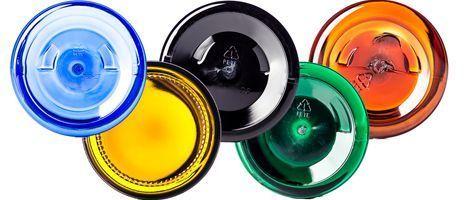How to Market Your Products as Eco-Friendly


The Growing Demand for Eco-Friendly Products
Consumers today are more environmentally conscious than ever. They actively seek out brands that align with their values, favoring products that are sustainable, ethically sourced, and responsibly packaged. However, marketing your products as eco-friendly isn’t just about slapping a green label on your packaging—it requires authenticity, transparency, and a solid strategy.
So, how can you effectively market your products as eco-friendly? Let’s dive into the key strategies that will help you connect with conscious consumers and stand out in a competitive marketplace.
1. Be Genuine and Transparent
Greenwashing—making misleading claims about sustainability—can backfire. Customers are savvy and will research your claims. To build trust:
- Use verifiable third-party certifications like USDA Organic, Fair Trade, or FSC.
- Clearly state your sustainability initiatives, such as using recycled materials or reducing carbon emissions.
- Be honest about areas where you’re still improving.
2. Use Sustainable Packaging
Packaging plays a huge role in consumer perception. Eco-friendly packaging not only reduces waste but also signals to customers that you prioritize sustainability.
- Opt for biodegradable, compostable, or recyclable materials.
- Minimize packaging waste by using right-sized boxes and refillable containers.
- Highlight sustainable packaging on your product labels and website.
3. Educate Your Customers
An informed customer is more likely to appreciate and support your eco-friendly efforts.
- Use blog posts, infographics, and social media to share facts about sustainability.
- Provide clear instructions on how to recycle or properly dispose of your packaging.
- Create behind-the-scenes content showcasing your sustainability efforts.
4. Leverage Social Proof and Certifications
People trust other people more than brands. Use social proof to reinforce your eco-friendly claims.
- Showcase customer testimonials and reviews that highlight your sustainability efforts.
- Partner with influencers who are passionate about environmental causes.
- Display official sustainability certifications prominently on your packaging and website.
5. Emphasize Ethical Sourcing and Production
Customers care about where and how products are made.
- Highlight fair labor practices and ethical sourcing of materials.
- Share stories about your supply chain and the people behind your products.
- Consider using blockchain or QR codes to provide transparency about sourcing.
6. Make Sustainability Part of Your Brand Story
Your commitment to sustainability should be part of your brand’s identity.
- Integrate eco-friendly messaging into your mission statement and marketing materials.
- Share your sustainability journey and milestones with your audience.
- Position your brand as a leader in eco-conscious innovation.
7. Offer Incentives for Sustainable Choices
Encourage consumers to make greener choices through incentives.
- Provide discounts or rewards for customers who return packaging for reuse.
- Launch loyalty programs that reward eco-friendly purchasing behavior.
- Promote limited-time offers on sustainable products to drive interest.
8. Use Green Digital Marketing Strategies
Sustainability extends beyond physical products; even your marketing approach can be eco-friendly.
- Reduce printed materials in favor of digital campaigns.
- Optimize website performance to lower carbon footprint.
- Utilize email marketing instead of paper-based promotions.
9. Collaborate with Eco-Friendly Partners
Working with other sustainable brands can enhance your credibility and reach.
- Partner with non-profits and environmental organizations.
- Collaborate with other green businesses for joint marketing efforts.
- Sponsor sustainability events to showcase your commitment.
10. Measure and Share Your Impact
Consumers appreciate brands that track and share their sustainability progress.
- Publish an annual sustainability report detailing your impact.
- Use data and visuals to illustrate reductions in carbon footprint, water usage, or waste.
- Set measurable sustainability goals and update customers on your progress.
Final Thoughts: Sustainable Marketing is Smart Marketing
Marketing your products as eco-friendly isn’t just good for the planet—it’s good for business. Customers are willing to pay a premium for sustainable products, and aligning with their values builds long-term loyalty.
Ready to take your eco-friendly marketing to the next level? Start implementing these strategies today and make a real impact on both your brand and the environment.




